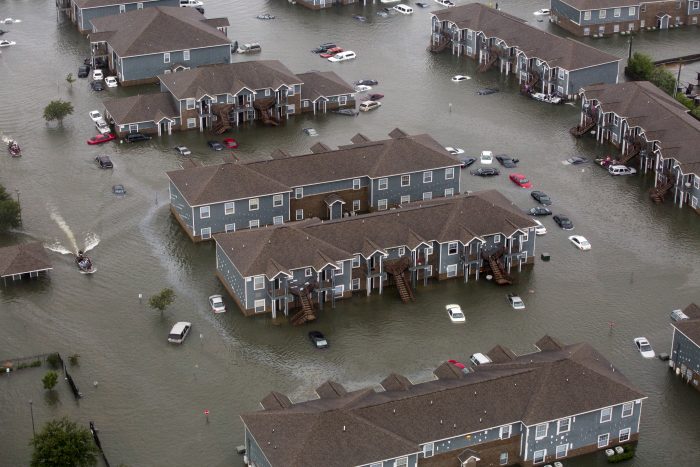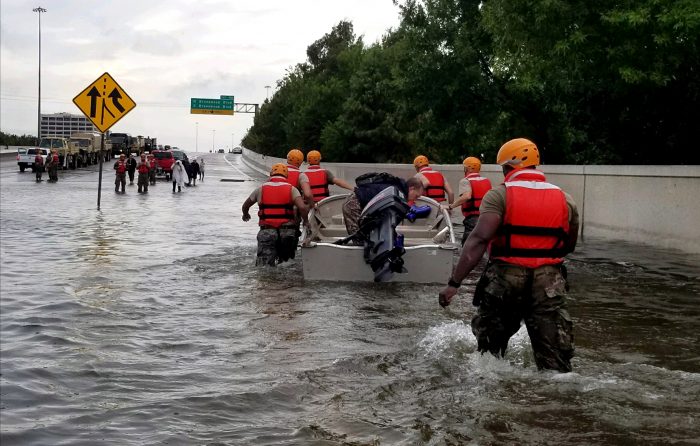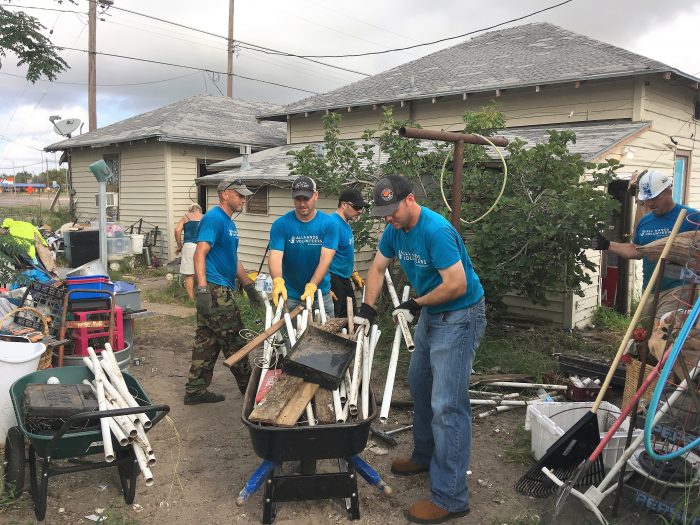Funding Collaboration Results in $1.5 Million in Preparedness Grants for Texas
As Hurricane Harvey hit the Texas Gulf Coast and made its way inland on August 25, 2017, private philanthropic dollars began to flow into the state to support the thousands of individuals whose lives had been severely affected. These philanthropic dollars were donated for the purpose of immediate response and – in the case of […]

As Hurricane Harvey hit the Texas Gulf Coast and made its way inland on August 25, 2017, private philanthropic dollars began to flow into the state to support the thousands of individuals whose lives had been severely affected. These philanthropic dollars were donated for the purpose of immediate response and – in the case of both the Rebuild Texas Fund and the Center for Disaster Philanthropy’s Hurricane Harvey Recovery Fund – to support mid- to long-term recovery efforts throughout the affected areas. Those of us who focus on the long-term effects of this disaster quickly realized that, though there was a generous amount of private philanthropic support, there was still a significant gap in the funding needed to address all the recovery issues throughout the state. As a result, we’ve joined forces to share data, information, assessments, and opportunities for funding in order to best leverage our finite resources and provide Texans the greatest chance at a full recovery.
The program officers from the Rebuild Texas Fund, Cristina Cornejo and Chris Hensman, have worked closely with the CDP Hurricane Harvey Recovery Fund Director Sally Ray to creatively address many of the needs that we are all seeing along the Texas Gulf Coast. All of us try to meet with potential grantees together, fund projects collaboratively, and brainstorm ideas as we are traveling throughout the state. We believe this helps grantees in a number of ways including: saving them time, offering different ideas and perspectives on potential projects, and providing better opportunities to match grantees with the appropriate funder.
During one of our brainstorming sessions prior to the start of the 2018 hurricane season, we realized that we were working to support communities that had barely begun to recover from what happened the previous August. How could they possibly be prepared for what could come from another natural disaster this year? What would happen to the progress made if another storm hit the same area? How many additional families would need assistance? How could we, as funders, help mitigate some of the potential problems that could arise if Texas suffered another devastating blow this hurricane season?
With some quick research, we learned that the National Institute of Building Sciences found, on average, six dollars can be saved in disaster recovery for every dollar invested in disaster mitigation.
That’s when we realized that we could help build the resiliency of the Texas coast if we were able to successfully invest our philanthropic dollars in preparedness and mitigation efforts. From this discussion, a collaborative funding effort was born.
The Rebuild Texas Fund and the CDP Hurricane Harvey Recovery Fund announced a request for proposals for the Harvey-affected areas of Texas in May. With a total commitment of approximately $1.5 million (increased from an original plan to spend $1 million), the focus of this funding partnership was to support preparedness, mitigation and resilience projects in any of the 41 counties of Texas where the federal government had declared the results of Hurricane Harvey damage were significant enough for a federal-level response. In less than a month, we received more than 160 grant applications!
After a thorough and thoughtful review and a stringent due diligence process, we are pleased to announce that 30 grants have been awarded to organizations, agencies, cities, counties and municipalities throughout the affected region.
Here are the projects that have been funded:
- Bee County Sheriff’s Office received $45,000 to support the purchase of specialized response vehicles to use during emergencies.
- Calhoun County was awarded two grants: 1) $3,156 to support the purchase of emergency cots, toilets and supplies to be used for emergency sheltering and 2) $22,500 to purchase fuel tanks with high capacity pumps that tie to a generator for use with emergency vehicles in Precinct 1.
- Town of Fulton received $50,000 to purchase a portable generator for use during power outages.
- City of Ingleside was awarded $10,000 to advertise and educate citizens about the emergency notification system and how to use it.
- City of Port Arthur received $34,100 to purchase four rescue boats to use during flooding emergencies.
- City of Port Arthur Emergency Operations Center was awarded $65,900 to purchase and update equipment for the city’s emergency operations center.
- City of Port Neches received $29,000 to purchase sandbags, generators, ready-to-eat meals and a rescue boat for use during disaster emergencies.
- City of Simonton was awarded $13,955 to purchase equipment to support emergency responders.
- Ed & Hazel Richmond Public Library received $17,184 to purchase and install storm shutters on the library building.
- Grace Episcopal Church was awarded $19,000 to purchase showers, ice-making, hot water and back-up internet facilities so that the church can better operate as an emergency shelter and as a host for volunteers post-disaster.
- Houston Area Women’s Center received $100,000 to purchase and install three generators to maintain electricity during outages.
- Houston Arts Alliance was awarded $75,000 to conduct disaster resilience training for arts agencies and artists.
- Houston Community ToolBank received $50,000 to develop an emergency operations plan, provide training, and purchase disaster tools and supplies for use by disaster response and recovery organizations during and after disasters.
- Missouri City Fire and Rescue was awarded $15,000 to fund organizational preparedness training and training materials.
- North Channel Assistance Ministries received $20,000 to purchase a generator to provide emergency electrical power for their food pantry, and to purchase an ice maker.
- Orange County was awarded $82,140 to purchase sand bag fillers and related equipment for use during flooding emergencies.
- Portland Chamber of Commerce received $15,000 for disaster preparedness training for small businesses.
- Refugio Independent School District was awarded $59,919 to purchase a large storage building to protect school vehicles during disasters.
- San Jacinto College Foundation received $48,112 to conduct hurricane preparedness seminars and distribute disaster kits.
- South East Texas Regional Planning Commission was awarded $100,000 to purchase software to match people in need of rescue with first responders and civilian volunteers.
- South East Texas Regional Advisory Council received $100,000 to purchase two class C tow vehicles for use during disaster emergencies.
- The Texas Women’s Empowerment Foundation was awarded $65,000 to provide training and disaster preparedness kits.
- The University of Texas Health Science Center at Houston received $40,000 to purchase diagnostic screening equipment to facilitate rapid triage at community-based locations
- Tri-County Emergency Medical Services was awarded $33,578 to purchase a rescue vehicle and hurricane shutters.
- Tri-County Fire Department received $98,000 to purchase two rescue boats and trailers.
- Trinity Episcopal Church in Baytown was awarded $28,000 for community preparedness kits, emergency supplies, and installation of shower and laundry facilities to enhance the church’s facilities for use as an emergency shelter and for housing volunteers post-disaster.
- Waller County Office of Emergency Management received $50,560 to purchase a swift water rescue boat.
There are two additional projects that have been awarded grants but still require some additional documentation before they will be funded.
Many of the projects that were not funded by this grant program were referred to other potential funding sources including: state and/or federal government grant programs, other philanthropic organizations, or potential future funding opportunities with the Rebuild Texas Fund or CDP.
The need for funding preparedness, mitigation and resiliency projects is great, and the benefits for Texas in funding them is clear. It goes well beyond protecting property. There is a real potential to save Texas lives – which is always our overarching goal.
More like this

Partnering for Hurricane Preparedness in Texas



